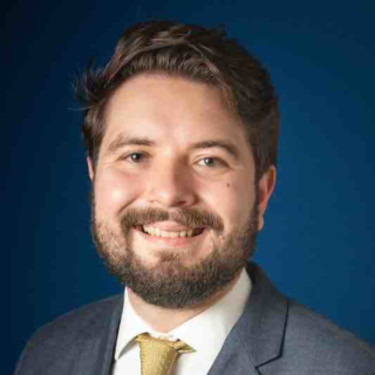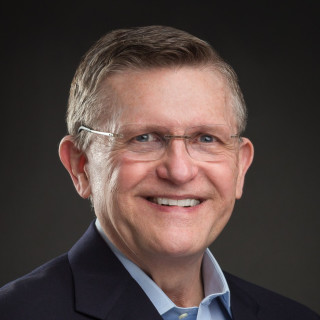After four years of hard work, you’ve finally made it to the most important day of your career: Match Day. The crowd around you is tense in anticipation of the unveiling moment. You feel like you could pass out, or maybe you just need to be sick. At the word “go,” you rip open your envelope, shocked to see your first choice residency listed there, right after “Congratulations, you have matched!” An intense wave of relief crashes over you. Next to you, tears gleam in your friend’s eyes as she learns she matched to the bottom of her list. You suddenly realize the finality of the step you’ve taken; both of you now have a job to do.
Match Day is undoubtedly the most important day for a medical student — even more so than graduation. This day is the culmination of countless hours of toil and effectively marks the beginning of your career as a physician. At the center of it all is the Match itself. The NRMP — or simply “the Match” — is part algorithm, part binding contract that’s responsible for assigning all graduating physicians to available residency training spots in the country. Initially designed to combat a predatory hiring landscape that favored institutions over applicants, the Match has been a bedrock of medical training for 70 years. By enforcing the one graduate, one position rule, residency hiring has become more efficient, and more transparent than before.
However, the Match is far from perfect. The current system has far-reaching consequences that primarily serve to protect institutions while pigeonholing the applicants it was created to protect. It is deftly structured to ensure not only its primary goal of placing residents in training positions, but also the survival of its own monopoly.
First, the compulsory nature of the Match strips away the ability of residents to advocate for themselves. All applicants must accept the contract offer of employment from their paired institution. Given the nature of these contracts, this effectively guarantees a year of employment with an institution. This offers excellent assurance to an institution — but also obliterates residents’ leverage to advocate for better hours, more humane working conditions, or increased pay. More insidiously, it leads to a race to the bottom between institutions that ensures residents universally remain a source of cheap labor for health systems. Indeed, this was the basis of a 2002 class action suit that ultimately led to legislative intervention allowing an exception for the Match in antitrust law.
Additionally, the Match functions in such a way that once residents have been paired with an institution, they are ill-equipped to transfer to a different program if they so choose. With the NRMP’s current monopoly on residency hiring, there is no virtual job board or other normal hiring marketplace for searching for available residency positions. Instead, residents must rely on their professional network to track down available slots. This can be especially difficult if a resident is transferring because of dissatisfaction with their current employer. This setup not only makes it nearly impossible to transition to different programs but also reinforces a culture in medicine that emphasizes personal resilience over institutional change. Perhaps this is why residency transfer remains exceedingly rare even though some evidence suggests more than 1 in 3 residents experience mistreatment.
Perhaps most frustratingly, the Match ensures that residents are compelled to reinforce the system themselves. Because of this monopoly on hiring, there is little discrepancy in starting wages or benefits between institutions. Instead, residents serve as a bargaining chip for recruitment. Undoubtedly, many residents — including myself — have a deep affection for their programs and co-residents. However, residents at most programs are obligated to spend a good deal of precious non-clinical time recruiting the incoming intern class. We participate in social hours, interview applicants, and actively maintain the social media presence of our program. Because of the Match, residency recruitment more closely resembles a months-long Rush Week rather than a serious endeavor where we identify future coworkers from a small number of qualified applicants.
But how do we restructure the system to make it more equitable for residents? At the same time, how do we create a process that also ensures that our hospitals are staffed adequately in a country already struggling with lack of adequate physician staffing and patient access?
The easiest way to solve these issues is to abolish the binding nature of the Match for applicants, while continuing to uphold the binding obligations of institutions. From an institutional perspective, a filled slot with a ranked applicant is the primary desirable outcome of the Match. For applicants, however, their entire life can be changed by the output of the algorithm, so they necessarily have more at stake. This change to the Match balances the scales by allowing applicants to review the terms of their contracts in a non-binding way. This empowers applicants to improve the terms of their employment while (perhaps more importantly) giving institutions the impetus to do so preemptively to ensure the matriculation of their matched applicants.
This change will then lead to other downstream effects. Namely, by reinforcing resident leverage in hiring, institutions should see a similar improvement in resident retention. This obviates the need for an alternative hiring network for residents seeking a transfer altogether. Additionally, by forcing institutions to stand on the merit of their own hiring package, residency recruitment will quickly conform to a professional hiring process focused on substance rather than a superficial emphasis on residency dynamics.
Most importantly, this change to the Match will lead to significant improvements in resident quality of life. A study in February 2023 revealed that sleep deprivation, feeling undervalued by an institution, and frequent interruptions to clinic work were among the biggest resident-specific drivers of burnout. By forcing institutions to come to the table for their residents, we can expect to see a significant improvement in one or even all of these factors.
Inevitably, some will say that this will increase the number of unfilled residency positions. However, nearly 75% of applicants match at one of their top three programs. It seems unlikely that a sizable number of residents will decide that a program in their top three would be an inadequate place to spend their next few years. This seems even more unlikely given that applicants who are unable to reach an accord would then be obligated to enter the SOAP, where only 21% of participating applicants were matched into a program in 2022 alone.
Additionally, there will be those who say this encourages increasing health care costs by depriving hospital systems of a cheap workforce. While it is certain that this would increase the generally acceptable wage for a resident physician, this does nothing to limit the hours worked by a resident or their overall clinical output. Resident labor is already considered to be more cost-effective than that of non-physician clinicians. Even at comparable salaries to APPs, residents are still obligated to work nearly double the clinical hours of their counterparts, which serves to drive down labor costs for hospital systems.
In its current configuration, the Match is a woefully unbalanced approach to resident recruitment. By making substantive but executable changes to the system, we have a golden opportunity to increase the well-being of the residents and honor those who have toiled for years to care for us all.
How would you rethink the Match? Share your strategies in the comments.
Dr. Matthew Scott is a fourth-year internal medicine-pediatrics resident in Richmond, VA. He is passionate about advocacy, engaging with his community, and his newborn daughter. Dr. Scott was a 2023–2024 Doximity Op-Med Fellow.
Illustration by Diana Connolly







